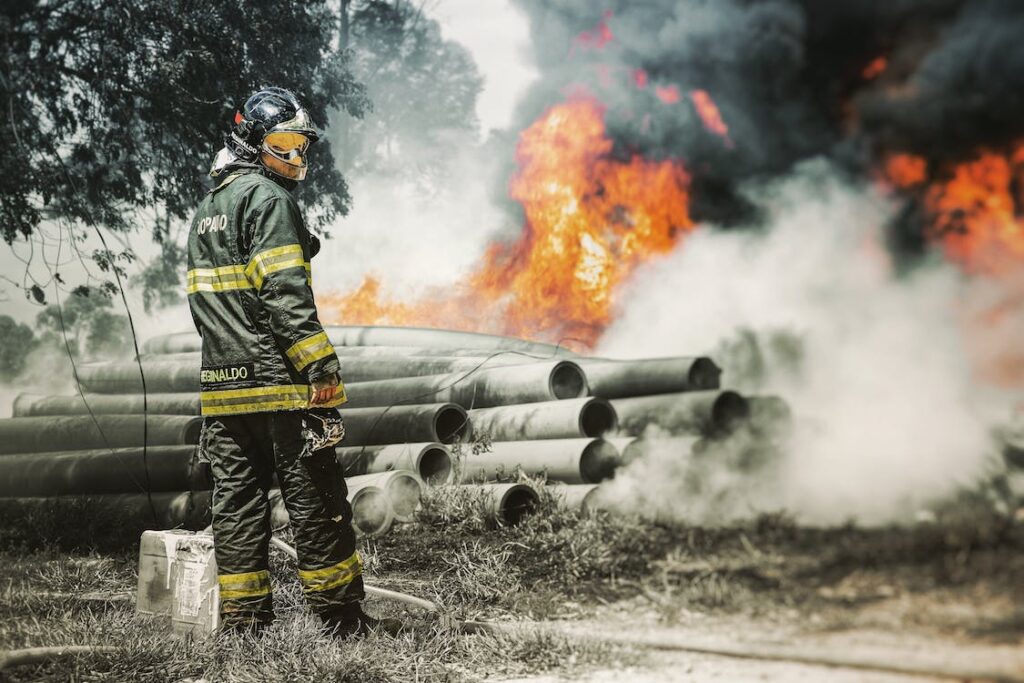Aqueous film-forming foam (AFFF) has long been a crucial tool in fighting flammable liquid fires, especially those involving petroleum products. While it has been indispensable for firefighters and military personnel, AFFF’s hidden environmental and health costs are now coming to light.
The foam contains toxic substances that can lead to severe health issues when there’s prolonged exposure. In this article, we will delve into the widespread environmental and health impacts of AFFF contamination.
The Pervasive Use of AFFF
AFFF is a versatile and essential firefighting tool utilized across a multitude of industries and facilities. Its applications extend far and wide, from military installations and chemical plants to fire departments, and oil refineries.
The appeal of AFFF lies in its unparalleled ability to combat fires fueled by flammable liquids, particularly petroleum products. Its unique characteristics. This includes the capacity to smother fires and prevent re-ignition, making it the first line of defense in challenging fire scenarios.
However, the very versatility and effectiveness of AFFF in fire suppression have inadvertently led to significant environmental implications.
The Silent Health Crisis: PFAS Exposure
AFFF’s effectiveness in extinguishing fires is beyond question, but its hidden danger is concealed within the chemical components it comprises. AFFF contains per- and polyfluoroalkyl substances (PFAS), including perfluorooctane sulfonate (PFOS) and perfluorooctanoic acid (PFOA).
As per the ATSDR, the National Health and Nutrition Examination Survey has been assessing blood PFAS levels in the U.S. population since 1999-2000. This survey has found that PFAS are present in minimal quantities in the bloodstream of most individuals. This has raised alarm bells due to their potential health hazards with prolonged exposure.
Scientific research has linked PFAS exposure to a host of alarming health conditions, including cancer, liver damage, fertility issues, and thyroid disease. These findings underscore the pressing need to address this issue and mitigate the risks associated with AFFF and PFAS.
AFFF’s Environmental Reach
The environmental ramifications of AFFF extend far beyond its immediate role in extinguishing fires. Notably, military bases and fire training facilities have emerged as significant sources of PFAS contamination.
As a result, communities situated in the vicinity of these facilities face the pernicious effects of PFAS-contaminated air, soil, and water sources. Drinking water, a fundamental necessity, is also affected, compounding the environmental toll of AFFF and PFAS contamination. According to EWG, more than 200 million Americans are consuming PFAS-contaminated water.
Legal Battles and Accountability
In recent years, a significant surge in AFFF-related lawsuits has brought to light the alleged negligence of AFFF manufacturers. According to TorHoerman Law, these lawsuits contend that manufacturers failed to provide adequate warnings about the potential health risks associated with PFAS exposure.
According to a recent update from ConsumerNotice.org, the primary manufacturer of AFFF foam, 3M, has proposed a $10 billion settlement for AFFF lawsuits. The proposal is yet to get court approval. If approved, it would settle a large number of AFFF claims.
Despite substantial firefighter foam cash settlements proposed by 3M, the quest for justice persists within the courtrooms. The legal landscape is dotted with thousands of pending AFFF lawsuits across the United States, driven by victims who seek accountability and compensation.
The Escalating Wave of AFFF Lawsuits
The wave of AFFF-related lawsuits continues to surge, with an ever-expanding list of individuals, communities, and organizations impacted by contamination.
As the legal landscape broadens, new defendants and entities emerge, shedding light on the need for transparency and accountability within the firefighting foam industry. These lawsuits reflect the growing urgency of addressing the issue comprehensively.
At the heart of AFFF lawsuits are the victims who remain resolute in their pursuit of justice. These individuals, who have suffered serious health consequences due to their exposure to AFFF and PFAS, are determined to hold manufacturers accountable.
Their lawsuits are a testament to their unwavering commitment to securing compensation and justice for the suffering they have endured. The resolve of these victims underscores the urgency of addressing the issue effectively and preventing further harm.
A Call for Responsible Management
The future of AFFF litigation remains uncertain, but one certainty is the increasing number of individuals and communities affected by AFFF contamination stepping forward. This highlights the pressing need for responsible management of potentially hazardous substances.
It emphasizes the far-reaching consequences of using this firefighting foam, from environmental damage to severe health risks. It also underscores the urgent call for greater accountability and transparency in the industry. The ongoing struggle seeks to ensure that the lessons learned from AFFF’s use are not forgotten.
Final Word
The ongoing environmental and health impacts of AFFF highlight a concerning reality, with PFAS contamination posing severe health risks and ecological consequences. Legal battles underscore the alleged negligence of manufacturers, emphasizing the need for accountability.
AFFF victims’ unwavering pursuit of justice highlights the urgency of addressing this crisis comprehensively. The escalating wave of lawsuits clearly indicates that the industry must now prioritize responsible handling of hazardous substances and enhanced transparency.
Moving forward, prioritizing safety and environmental consciousness is essential to mitigate the far-reaching effects of AFFF, ensuring a safer approach to firefighting.







